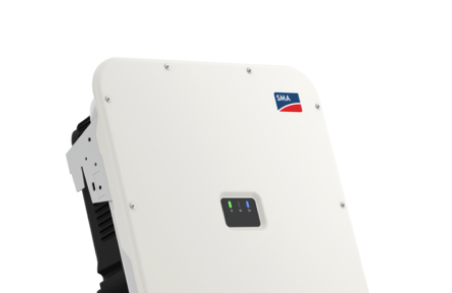In low-voltage power supply systems, power is typically distributed from distribution transformers to various loads in the grid, known as forward current. However, when a photovoltaic (PV) power plant is installed and the generated power exceeds the local load demand, the surplus electricity needs to be fed into the grid, resulting in a reverse current flow, also known as anti-islanding.
When a PV inverter converts the DC power generated by the PV modules into AC power, there is a small amount of DC component and harmonics present. Additionally, the PV electricity is fed into the grid through the distribution transformer without controllability. As a result, some power utilities only allow PV systems to be connected to the grid but do not permit the excess power to be fed into the grid through the distribution transformer. Anti-islanding solutions are designed to address such issues.
What is Anti-Islanding?
In a normal photovoltaic (PV) power generation system, DC power generated by PV modules is converted into AC power and integrated into the grid. However, in a PV system with anti-islanding, the generated electricity is only supplied to the local loads, preventing the excess power from being fed back into the grid.
 |
 |
Why is it necessary to prevent reverse power flow?
When excessive power is simultaneously fed into the electrical grid, it not only leads to a decline in power quality but also can cause electrical faults due to outdated wiring in some cases. To prevent these issues, certain regions prohibit or restrict the injection of power into the grid, requiring the installation of measures to prevent reverse power flow.
Additionally, for some photovoltaic projects that have been installed but haven't obtained grid connection permits in a timely manner, implementing measures to prevent reverse power flow allows for the early utilization of green energy.
However, new exceptional circumstances have emerged, such as:
Due to capacity limitations of the upstream transformer, the local grid does not permit new grid connections. However, customers still desire to install their photovoltaic systems.
Due to policy reasons in certain areas, grid connection is not allowed, and fines are imposed if reverse power flow is detected.
The photovoltaic system installation is completed, but there is a lack of proper communication with the utility company, resulting in a refusal to connect to the grid, while the cost of installing energy storage systems is prohibitively high.
These new situations also impose the requirement of preventing reverse power flow on our grid-connected photovoltaic systems.
The working principle of preventing reverse power flow is as follows:
If the power generated by the photovoltaic system at point C is less than the power consumed by the load at point B, there is no need to prevent reverse power flow.
If the power generated by the photovoltaic system at point C is greater than the power consumed by the load at point B, it requires the implementation of measures to prevent reverse power flow.
a. In the case of multiple photovoltaic power sources at point C, one or more sources can be disconnected until the power generated by the photovoltaic system at point C is equal to or less than the power consumed by the load at point B.
b. In the case of only one photovoltaic power source at point C, the options are to limit the power output of the photovoltaic system or increase the load consumption until the power generated by the photovoltaic system at point C is equal to or less than the power consumed by the load at point B.
If intelligent energy meters are installed at points B and C, the information on the power generated by the photovoltaic system at B and the load consumption at C can be collected and compared. Based on this information, measures such as limiting the power output of the photovoltaic system or increasing the load consumption can be selected to prevent reverse power flow.
A common practice is to install a bidirectional or unidirectional energy meter at point A. If the current flow is detected towards the grid, measures such as limiting the power output of the photovoltaic system or increasing the load consumption can be selected to prevent reverse power flow.

Preventing Reverse Power Flow Solution:
Install an electricity meter or current sensor at the grid connection point to detect current flowing towards the grid, and then reduce the output power of the inverter.

Common Misconceptions about Anti-Backflow:
1, Instruments themselves cannot prevent backflow. Instruments monitor the magnitude and direction of power and collect data for inverter adjustment strategies.
2, If the system has multiple inverters, considering the characteristics of the current RS485 bus (only one master station per bus), a communication management device needs to be added.
Photovoltaic AC Coupling Energy Storage Solution:
Install an electricity meter or current sensor at the grid connection point. When it detects current flowing into the grid, the inverter keeps the output power constant and activates the bidirectional converter. The excess electricity is stored in the battery, and it is discharged when the photovoltaic power decreases or the load power increases.










